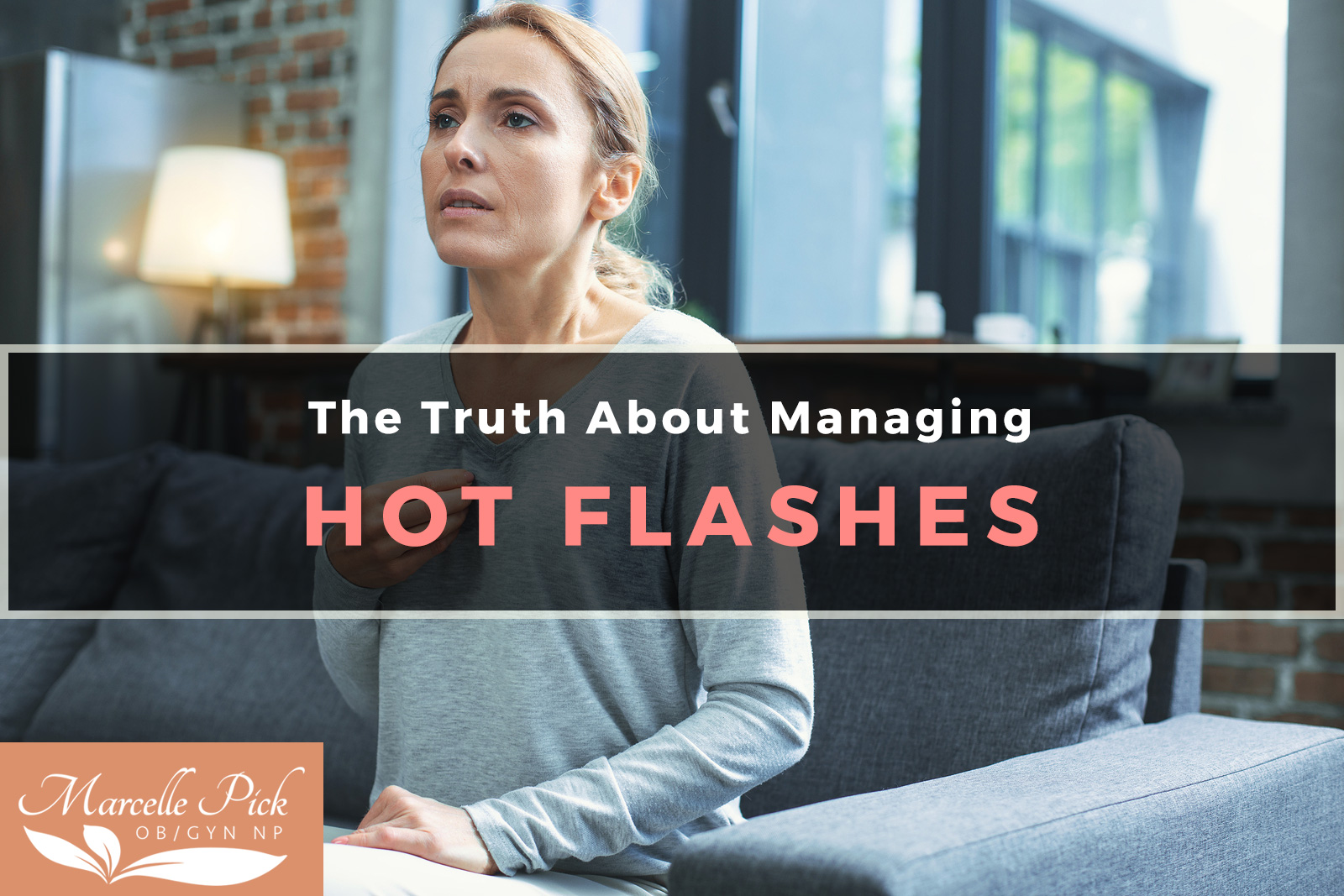Have you been having trouble sleeping? Maybe you’ve been experiencing hot flashes. Perhaps your clothes don’t seem to fit like they used to, or you aren’t thinking quite as clearly as you used to. You’re concerned about these changes, but they aren’t happening consistently. You might be thinking, What is going on with my body? Could it really be menopause already?
Despite what you might think, menopause is a process that doesn’t happen overnight or over the course of one day. Menopause takes time. Technically, menopause is defined as occurring exactly one year from your last period. This is why it’s hard to know if you’re at the beginning, in the middle, or at the end of the process. You might not even be close.
We’ll help you explore what it means to be in perimenopause (the time leading up to menopause) and menopause. This way you can find the tools you need to feel better — no matter where you are on the menopause timeline.
What’s Happening In My Body? The Biology of Menopause
Just as our bodies take 10-12 years to enter puberty and many teens skip periods or have irregular ones, there’s also a transition time to reach the end of your periods. This is why many women are confused about whether or not they are in menopause — there is no bright line marking the onset of menopause. And you can only confirm you were in menopause when you look back after it’s been 12 months since your last period. And very few of us keep track at that point.
Dissecting a Symptom: Anxiety
In addition to well-known symptoms such as hot flashes, night sweats, and vaginal dryness, there are many surprising menopause and perimenopause symptoms. One of the most remarkable symptoms is anxiety, though women don’t often connect it to menopause or their hormones. Recently, the most frequent complaint I have among my patients is that they are having increasing symptoms of anxiety as they approach menopause.
Why is anxiety so common at this time in your life? The hormone progesterone, which helps prepare the uterus for a fertilized egg, is also involved with a neurotransmitter in the brain known as, GABA (gamma-aminobutyric acid). GABA is a calming neurotransmitter, helping us handle stress and anxiety. As progesterone levels drop during perimenopause, it can lead to an increased response to stress – and more anxiety. Many women remember the feeling of having high levels of progesterone during pregnancy, and the calming effect it had on them.
Stress is important to mention when it comes to menopause symptoms as well. When your body has been dealing with long-term stress and anxiety, your adrenal glands (which are responsible for responding to stress and making progesterone and estrogen after menopause; in fact they produce 50% of these hormones after menopause) are called upon to produce stress hormones such as cortisol and adrenaline, instead of supporting the body’s changing needs in terms of sex hormones. This illustrates how your sex hormone levels are linked to other aspects of your health, including symptoms and feelings. Click here to assess your adrenal health.
But Can I Confirm I’m in Perimenopause?
Unfortunately, there is no precise blood test to say whether you’re in a perimenopausal state but there is good news. Your practitioner can check to see if your FSH levels are rising, which makes it likely, but not definitive.
Common Perimenopause Symptoms
Women may notice any of these symptoms five to ten years before menopause is official.
- Irregular periods
- Insomnia
- Fatigue/ loss of energy
- Hot flashes and night sweats
- Forgetfulness or foggy thinking
- Thinning hair or hair loss
- Vaginal dryness
- Joint discomfort /stiffness
- Inflammation
- Food cravings
- Digestive symptoms
- Pain with intercourse
- Anxiety and/or sadness
- Irritability and/or moodiness
- Weight gain especially around the waist and hips
If any of the symptoms on this list sound familiar, take our quick Hormone Imbalance Quiz to receive our individualized advice about how to feel better.
It’s Possible to Chart a Progression of the Hormonal Changes That Happen from Age 35 to 55:
Beginning at around age 35, our hormones generally begin to change — though you probably don’t notice any symptoms at all. At this time, estrogen begins a slow decline and progesterone begins a faster decline. But keep in mind, progesterone and estrogen ratios may fluctuate — increasing and/or decreasing – before they decline permanently. Thirty-five is also when ovarian follicles (containing eggs) begin to fall off more quickly. What we generally see in these years is that estrogen goes down more slowly than progesterone, which often creates an imbalance in the hormones.
By their mid-forties, most women have fewer follicles to release eggs during menstrual cycles. As a result, your body increases its effort to create viable eggs from the follicles by increasing follicle stimulating hormone (FSH) using the part of the brain known as the pituitary gland. Estrogen and progesterone ratios may be in flux during this time as well.
Sooner or later, your follicles become less sensitive to FSH and ovulation may not happen with every period. During this time, periods can become irregular. As the pituitary ramps up FSH, other hormone loops connected to pituitary gland function may be affected, including your stress response and thyroid hormones. At this point you may notice more symptoms. That is one of the reasons we use the FSH level to determine the possibility of perimenopausal changes.
Commonly between the ages of 50 and 55, your periods will stop. Once you haven’t had a period for 12 consecutive months, you are in menopause. Symptoms may continue — or even arise for the first time — as your body adjusts to your new hormone levels.
Wherever you are in the process, you don’t have to simply suffer through symptoms. Research has shown that help can be obtained from using herbs in the form of passionflower, ashwagandha and more. Paying close attention to nutrition, exercise, sleep and your emotional health can also help.
Learn more about perimenopause and early menopause in our many articles on these topics in our Menopause and Perimenopause section.







